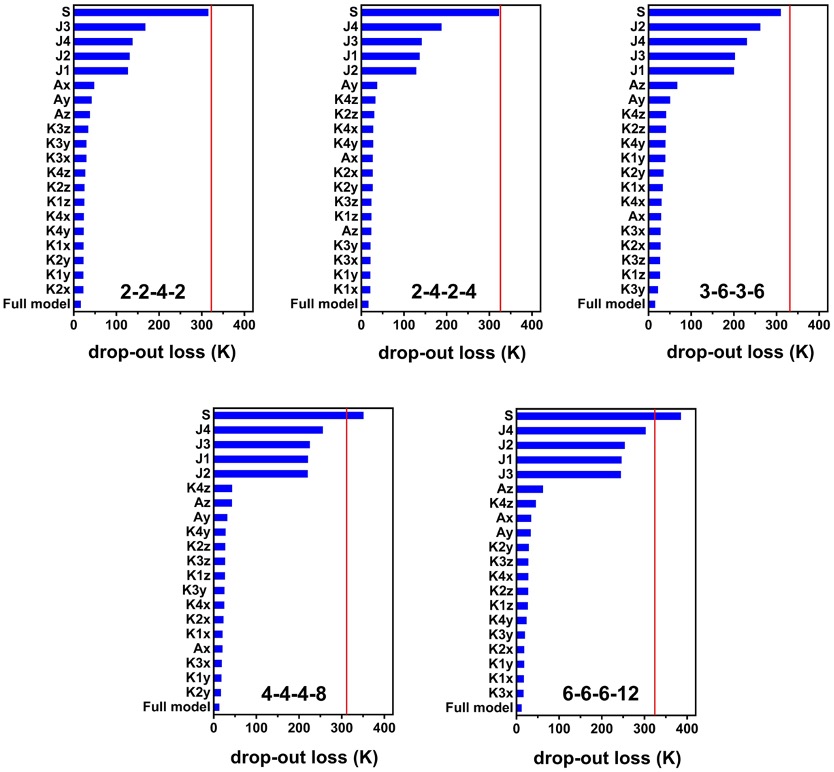| Dec 12, 2022 | |
Massive Monte-Carlo simulation guided data-driven model for 2D Curie temperature |
|
| (Nanowerk Spotlight) Magnetism at atomically thin two-dimensional (2D) materials is of essential interest to scientists and engineers since it has the potential to revolutionize modern information technology enabling ultra-fast and ultra-small novel electronic and magnetic devices. | |
| Until recently, however, the existence of 2D magnetism was hotly debated. Mermin and Wagner’s classical theoretical work based on an isotropic Heisenberg model was the source, which showed that the existence of long-range magnetic order at finite temperatures is not feasible at 2D. | |
| In 2017, the experimental demonstration of long-range ferromagnetic order in two 2D materials, CrI3 and Cr2Ge2Te6, firmly established that 2D magnetism can survive at finite temperatures. | |
| Since then, many 2D magnets have been experimentally identified. These materials exhibit strong magnetic anisotropy, which was not accounted for in the model of Mermin and Wagner. Therefore, it has been touted as the main reason for the existence of 2D magnetism. | |
| Magnetic materials, which exhibit long-range magnetic order, are primarily of two types: ferromagnet and anti-ferromagnet. With the increase of temperature, the magnetic order fluctuates and once the temperature crosses a critical value, the material becomes paramagnet. This transition temperature is called the Curie temperature (TC) and Neel temperature (TN) for ferromagnet and anti-ferromagnet, respectively. By ‘magnet’ we hereon refer to ferromagnet. | |
| Most of the experimentally demonstrated 2D magnets possess a Curie point far below the room temperature, limiting their application in the real world. Since the material space is infinite, digital discovery of 2D magnets with high-TC has gained popularity. | |
| In this work (Patterns, "Massive Monte Carlo simulations-guided interpretable learning of two-dimensional Curie temperature"), we developed an end-to-end computational pipeline that can predict the Curie temperature accurately from the first principles-based quantum mechanical calculations. | |
| Monte Carlo (MC) simulation is one of the important component of this pipeline, which captures the temperature-dependent magnetic-order fluctuations. The MC calculations, when done rigorously, can be extremely time-consuming. This is a limiting factor to cover a vast material space. | |
| Several theoretical and semi-empirical formulae have been developed to estimate the Curie temperature rapidly to bypass the MC process, but these are usually heavily approximated. | |
 |
|
| Figure 1. Schematic of the coupled data-generation-model-training process. (Image: Prof. Santanu Mahapatra, Nano-Scale Device Research Laboratory, Department of Electronic Systems Engineering, Indian Institute of Science Bangalore) (click on image to enlarge) | |
| As an alternative, in this work, we developed generalized data-driven deep neural network (DNN)-based machine learning (ML) models that can predict the Curie temperature rapidly and accurately. | |
| The main obstacle in developing these models was the absence of reliable datasets on which the models could be trained. We generated a dataset containing a quarter of a million such data points performing a massive amount of MC simulations in a powerful supercomputer. The input space of 20 variables was sampled randomly and uniformly, and then the physically meaningful inputs were fed to our in-house MC code. | |
| It is a natural tendency of 2D magnets to have low Curie points, which was also reflected in this random dataset. To generate a near-uniform TC distribution, a concept of data-generation using intermediate ML models was introduced, and the process was coupled with the learning from the data. At the end, a near-uniform TC distribution in the extensive range of 10K - 1000K was achieved and the DNNs were trained on this data. | |
| We demonstrate that they exhibit exceptional prediction accuracy both in the case of unseen random data and experimentally verified real materials data. | |
 |
|
| Figure 2: Permutation feature importance analysis of the models. (Image: Santanu Mahapatra, Nano-Scale Device Research Laboratory, Department of Electronic Systems Engineering, Indian Institute of Science Bangalore) | |
| The DNN-based ML models are usually treated as black boxes as these are too complex to examine and interpret manually. Recently, however, excellent tools have been developed that can make this black box much less opaque by analyzing the datasets along with the models. | |
| We perform interpretability analysis on our models using these tools. We find out that the magnetic moment of the atoms, along with the isotropic exchange terms, majorly contribute to the TC. In contrast, the anisotropy terms only provide minor contributions. This is clearly against the highly regarded opinion that anisotropy stabilizes magnetism in 2D. | |
| Interestingly, on the same day our work was published, another independent study came out in Nature Communications ("Breaking through the Mermin-Wagner limit in 2D van der Waals magnets"), where researchers used a pure physics-based approach to establish that instead of anisotropy, the exchange interactions and finite size of 2D materials are the two main factors for stabilizing magnetic order at finite temperature. This example shows that both the science and data driven models can converge to the same point, if data is curated with care and analyzed meticulously. | |
| Data, code, and model are available here. | |
| By Professor Santanu Mahapatra, Nano-Scale Device Research Laboratory, Department of Electronic Systems Engineering, Indian Institute of Science Bangalore | |
|
Become a Spotlight guest author! Join our large and growing group of guest contributors. Have you just published a scientific paper or have other exciting developments to share with the nanotechnology community? Here is how to publish on nanowerk.com. |
|
